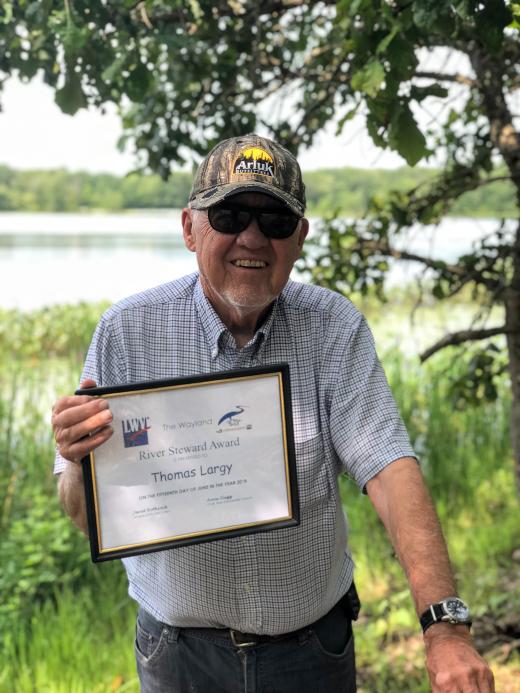Member Spotlight: Tom Largy
Tom Largy is dogged in a kind and deliberate way. The former Greater Boston Trout Unlimited (GBTU) president and longtime TU member has given the better part of the 47 years he has lived in Wayland, MA to protecting and nurturing the area’s complex watersheds. His drive to protect and sustain has produced remarkable results. This past June, he was recognized by the River Stewardship Council for his almost two decades of work with the Wayland Surface Water Quality Committee clearing invasive water chestnut plants from Heard Pond in Wayland.
Tom has also helped GBTU’s effort to support more study of the potential negative effects of the proposed Cascade 40B housing development on the old Mahoney’s site along Pine Brook, a known cold water resource with a thriving Eastern Brook Trout population.
Heard Pond, Wayland, MA
For Tom, it all started when he was 13. He and a friend walked a few miles to a Pacific Northwest creek “they don’t have any brooks over there . . .” he smiled. They stood on a log and dropped worms into the deep, black pool that lay below. The two boys caught black rainbows, camouflaged for the dark water beneath the log, “those trout were black from top to bottom,” he remembered. They fished for hours, and Tom still smiles at the memory almost 70 years later. Visit Heard Pond or the Sudbury River with Tom, and you will immediately see how that same, almost overflowing love of fishing forms the foundation of his conservation efforts.
Tom has led countless conservation projects in and around Wayland, but his efforts at Heard Pond embody his determination. “The entirety of the pond was covered in a monoculture, water chestnuts, when we started,” he said as he looked out on the pond on a cool, August day. Along with a dedicated group of volunteers and armed with a town and federal grant, the Wayland Surface Water Quality Committee began clearing out the invasive water chestnut in 2003. “They are nasty things with spikes,” Tom half laughed as he described the invasive plant, which was probably introduced to the pond in the 19th century as a curiosity. Growing in clusters with spiked nuts and long tendrils ending in broad leaves, the water chestnut quickly spread and inundated the entire pond. “We harvested 1.2 million pounds of water chestnut our first year,” he said while walking the banks of the now shimmering surface of the pond.
Water Chestnut plants pulled from Heard Pond
The fight against the invasive plant continues. Crews still clear persistent pockets of water chestnut by hand. This year, clean-up crews have pulled 10,000 plants. The fact that crews can harvest the invasives by hand is a testament to 15 years of sustained effort by Tom and the Wayland Surface Water Quality Committee.`Along with a growing number of locals, Tom now frequents the pond to fish for a healthy population of Largemouth bass.
As our chapter continues to grow and take on new conservation challenges, Tom Largy’s example stands as a reminder that success, or even progress, only comes through determinations and a deep love the watersheds we fish. Thank you, Tom, for your work in Wayland and with us at GBTU!



